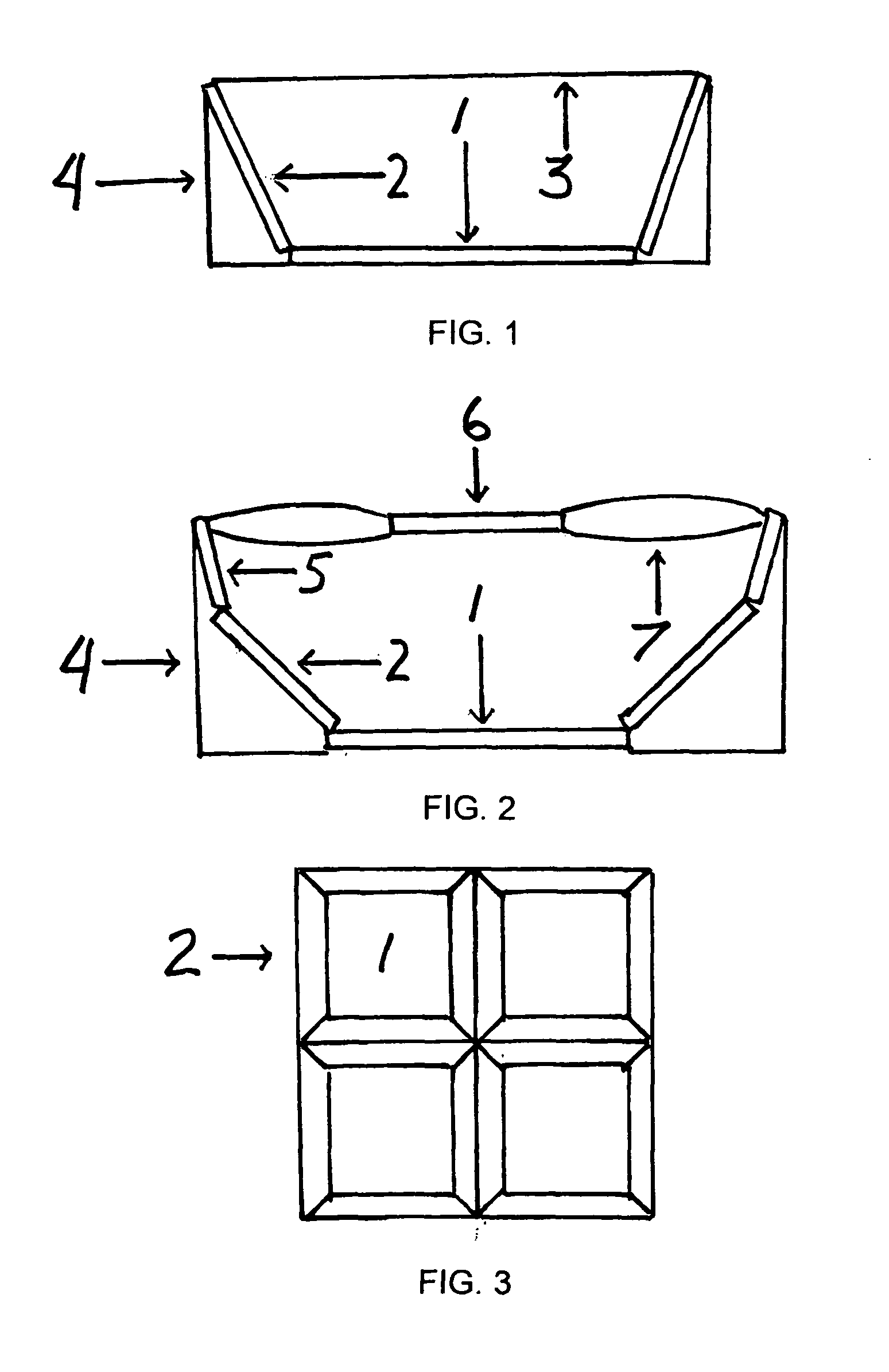Method and device for increasing solar cell output
- Summary
- Abstract
- Description
- Claims
- Application Information
AI Technical Summary
Benefits of technology
Problems solved by technology
Method used
Image
Examples
Embodiment Construction
[0016]Referring to FIG. 1, one embodiment of the present innovation in a side perspective illustrates a photovoltaic cell, 1, surrounded by a single tier of reflectors, 2, protected by a transparent cover, 3, and supported in a frame, 4, which may also consist of cooling vanes.
[0017]Referring to FIG. 2, another embodiment of the present innovation in a side perspective depicts a photovoltaic cell, 1, surrounded by a double tier of reflectors, 2 and 5, at different angles in relation to each other and the solar cell, supported in a frame, 4, with an overhead reflector, 6, and surrounding lens or lenses, 7, these also constituting a protective cover, 6.
[0018]Referring to FIG. 3, one embodiment of the present innovation viewed from an overhead perspective shows photovoltaic cells, 1, surrounded by a single tier of reflectors, 2, in a tessellated grid.
PUM
 Login to View More
Login to View More Abstract
Description
Claims
Application Information
 Login to View More
Login to View More - R&D
- Intellectual Property
- Life Sciences
- Materials
- Tech Scout
- Unparalleled Data Quality
- Higher Quality Content
- 60% Fewer Hallucinations
Browse by: Latest US Patents, China's latest patents, Technical Efficacy Thesaurus, Application Domain, Technology Topic, Popular Technical Reports.
© 2025 PatSnap. All rights reserved.Legal|Privacy policy|Modern Slavery Act Transparency Statement|Sitemap|About US| Contact US: help@patsnap.com


